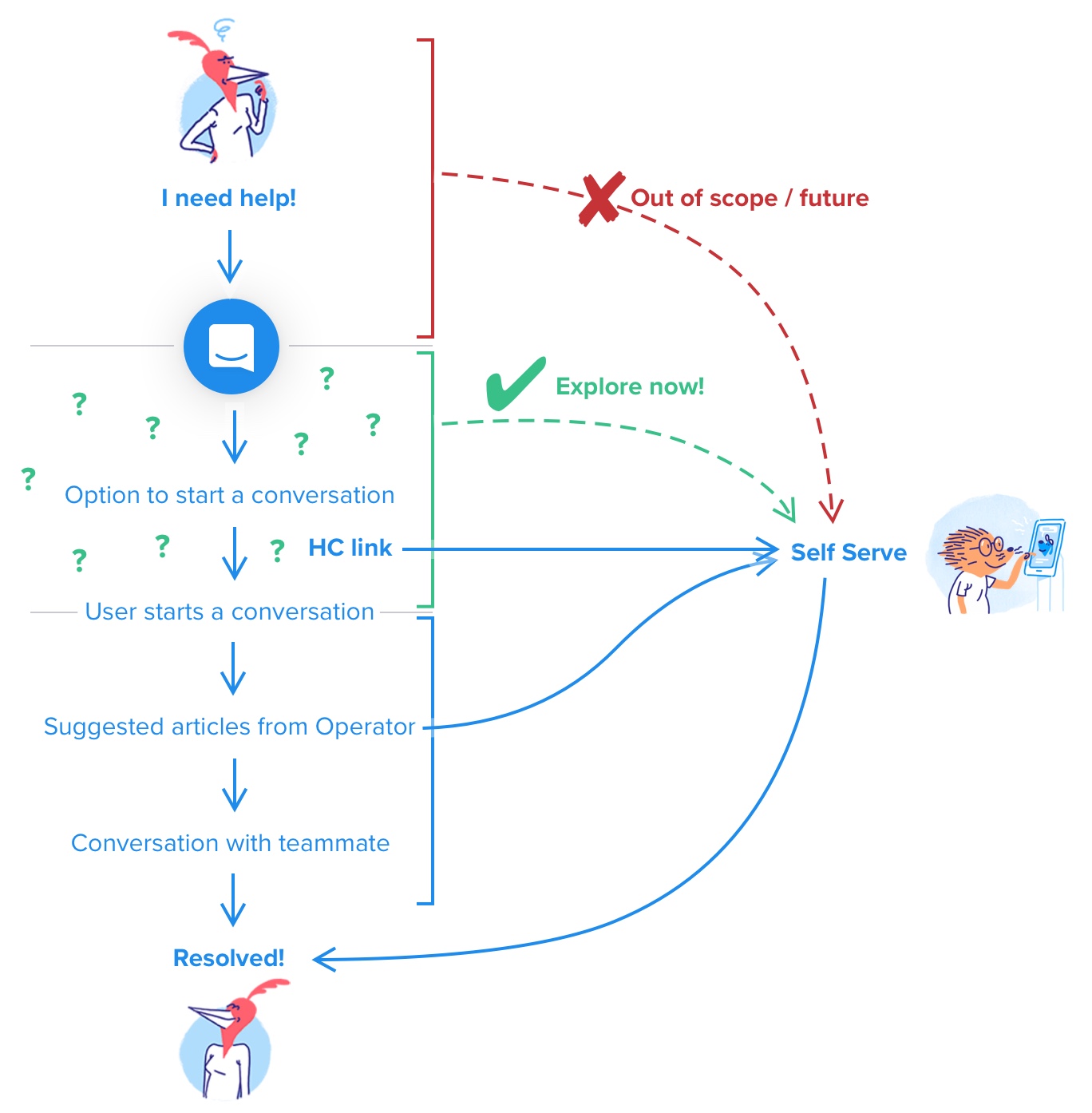In order to understand how our team in London ended up driving a complete redesign of Intercom’s Messenger, as well as building the company’s first ever machine-learning chatbot product, it makes sense to first paint a picture of the product space we were working in, and the problems we set out to solve.
One thing Intercom has always been known for as a strong point is product, and I was privileged to get to work with some of the best product minds in the business. An important principle at Intercom is to start with the problem for every project, rather than starting work based on assumptions about what feature or functionality actually needs to be build.

What this meant for the Articles product we were responsible for as the first London team was that the problem wasn’t necessarily lack of functionality as part of the help center, but instead the more accurate framing was better integrating Articles functionality into key parts of important workflows—tying together multiple cross-sections of Intercom’s wider functionality—all in service of helping our customers resolving inbound support queries as efficiently as possible, and ultimately to support more of their customers with less effort.
Taking aim at "Pre-conversation Self-serve"
The first longer-term problem we set out to solve was all about the idea of "pre-conversation self-serve"—the hypothesis that if we could effectively route more end-users to answers that resolve their queries before support agents were even involved, our product could offer our customers a significant top-of-funnel reduction in inbound support conversation volume, thus and giving our customers the leverage to handle larger and larger support operations without having to scale their teams—while simultaneously getting end-users legitimate resolutions much faster.

Starting small
Our first step was to kick off some early research experiments to assess the willingness of end-users to make an attempt at self-serving using our customers’ help center articles, before starting a conversation—instead of waiting till after a conversation had begun to send article suggestions.

We started with the smallest and simplest thing that could possibly work—a simple link on the new conversation screen prompting people to try the help center—and we turned it on for a small and deliberately selected group of customers. Turns out way more people tried the help center before starting a conversation than we’d predicted.

Based on this initial experiment, we decided to try fleshing out this idea further by expanding the Help Center link to become a search input which people could use to launch them into the help center with more context about what they were looking for.

While this direction had potential, the key challenge we kept running into as we explored was that this was still dependent and too closely coupled to the "new conversation" interaction—even if someone finds this useful, the only way to find it again was to click through to the new conversation screen again.
What we really needed was to somehow capture people’s intention to self-serve and give them the answers they needed one step upstream of this whole new conversation touchpoint. Only problem was… there were no upstream steps!
Back to first principles
We clearly needed to rethink this problem in a more fundamental way, but as it happened, setting out on the journey of understanding this problem would quickly lead to our team in London driving not one but two of Intercom’s largest coordinated cross-company product launches ever:
- An entirely redesigned Messenger—from all-new visuals and front-end workflows, back-end system model, all of the settings/configuration, the launch of an entire App Store platform, and more!
- The launch of Answer Bot (later renamed Resolution Bot, before eventually evolving to becoming Fin) - Intercom’s first ever machine-learning based product.
… with our London product teams at the very center of all of it. The final result of these two workstreams of product design ended up combining to eventually become The Next Chapter, Intercom’s biggest keynote announcement ever.
Keep reading to learn more about how we got there…
